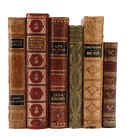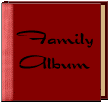
|
HOME |

Writing Your Family History
Pre-Writing
Beyond Group Sheets and Pedigree Charts: Fleshing Out Your Ancestors.
Gather your stories:
Interviews - Visit living relatives. Ask specific questions that help trigger memories.
Questionnaires - Did they like pets? Did your grandmother fluff pillows? What was your favorite meal as a child?
Letters - Study your ancestors use of language. Was she educated? Was he a self-taught man?
Diaries - Let your ancestor speak to you.
(If you don’t have these artifacts from your family read published letters and diaries from the time period. )
Documents - Military records give a physical description.
Heirlooms - Record stories surrounding heirlooms. Did your grandparents receive that quilt for a wedding present? Did your great-grandfather receive his watch at retirement?
Collect historical information:
Published sources
Magazine articles
County histories
Letters and Diaries
Maps, photos
What kind of Family History is this?
Decide the scope:
(ALL) The descendants of one individual:
e.g.: William Dill and his Family in America
Ancestors of (One family name back to original immigrant.)
e.g.: Walker Family Roots
Focus on one individual, one couple
e.g.: The Lives and Descendants of D.B. and Angeline Smith
Choose your audience:
Your immediate family?
(A print out from your computer with illustrations and documentation may be all you need.)
All potential family members with that surname?
Genealogists, historians?
Donate to a library?
Fiction, mass market non-fiction?
(Choose a printer or publisher to produce the book for you.)
What genre is your Family History?
1) Reference Genealogy.
Bare bones, names, facts and charts. Print-out data and distribute. (e.g.: Internet.)
2) Technical Genealogical Narrative.
Take the bare bones a step further. Include biographical material, case studies, discussion of research. (This is more academic.)
3) Life Story Writing.
Biographies, memoirs, autobiographies. (Angela’s Ashes, Rocket Boys.)
4) Family History Narrative.
Tells the family’s story in a creative, dramatic or literary fashion.
5) Family History Memoir.
Tells a non-fiction story based on your search for your ancestors.
6) Genealogical Fiction.
(Roots, Cane River.)
7) Edited Diaries and Letters.
(War Letters, As Always Jack, Covered Wagon Women series.)
Ready to Write
How do you organize the bones?
Front matter appears in the following order: (From: Producing a Quality Family History)
Title Page
Copyright page
Dedication
Acknowledgments
Table of Contents
List of Charts, Illustrations, Maps or Photographs
Foreword, Preface
Special sections (e.g. list of abbreviations)
Introduction (European origins of the family, or history of the area, or how you came to study your family’s genealogy.)
Main Text:
Chapters
You may want to divide chapters by individuals, generations, eras, or events. One of the more common is chronological. (From: Genealogy.com Learning Center)
Chapter 1 (or First Generation)
A. Introduction to chapter (Overview of an individual, couple, or family’s life, interesting myths, facts or questions.)
B. Vital statistics
C. List of Children
D. Biographical
E. Photos
F. Miscellaneous items (Copies of obituaries, plat maps, census records.)
G. Footnotes, notes, sources
Back Matter:
(From: Producing a Quality Family History)
Appendices (Can include transcripts of documents, additional research information, etc.)
Glossary (For foreign languages, diseases, tools, occupations, foods of our ancestors.)
Bibliography
Index

Family History
Worksheet
Stories, Heirlooms, Myths & Realities
_______________________________
_______________________________
_______________________________
Title _____________________________
Scope ____________________________
Audience __________________________
Genre ____________________________
Preface ___________________________
Introduction________________________
Chapter 1__________________________
(Generation 1)
Chapter 2 _________________________
(Generation 2)
Chapter 3 _________________________
(Generation 3)
Chapter 4 __________________________
(Generation 4)
Illustrations (photos, maps, charts)
_________________________________
_________________________________
_________________________________
Sources (vital records, location of source)
_________________________________
Bibliography
|
HOME |